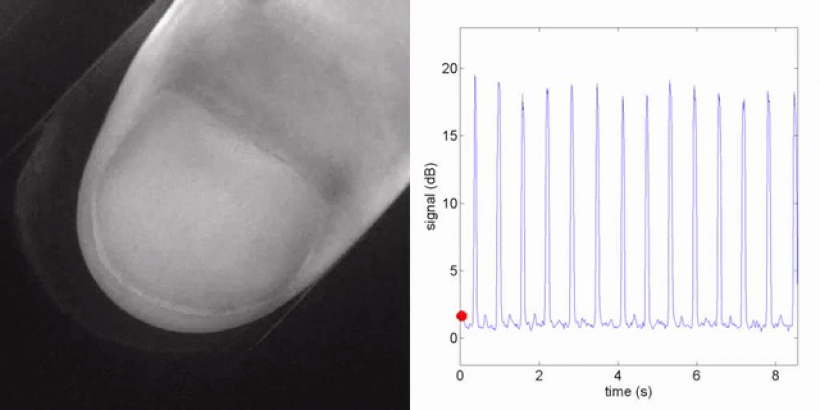-
Notifications
You must be signed in to change notification settings - Fork 34
Introduction to Remote Photoplethysmography (rPPG)
Welcome to the "Introduction to Remote Photoplethysmography(rPPG)".
In this section, you will learning what rPPG is, and then understand about how it works!
Before starting this section, let's star the rPPG GitHub and join the community to grow our open source project together.
How can we observe blood flow? Just as throwing a stone into a lake creates ripples, subtle changes occur along the blood vessels when the heart beats to pump blood. This is called a plethysmogram (PTG). The speed at which pulse waves move is much faster than the speed at which blood flows. It takes about 1 to 2 seconds for blood from the heart to reach the fingertips, but it is said that pulse waves take about 0.16 seconds.
PPG measures these pulse waves. This is because the speed at which pulse waves move is affected by blood vessel conditions such as arterial thickness and blood density, so it becomes data to know the condition of a person's circulatory system-heart and blood vessels. Since you can know your heart rate by continuously measuring it, you can guess your overall heart health or physical fitness level just by measuring your pulse wave well.
So how do we measure pulse waves with light? Investigate and understand the fine blood flow that changes according to the pulse wave. When light is projected from the PPG sensor to the skin, the amount of light absorbed varies according to the amount of blood flow. Therefore, by measuring how much light is absorbed, the change in blood volume can be known.

PPG is a non-invasive method of obtaining pulse waveforms in blood vessels by using optical characteristics of changes in blood vessels in the skin, and is used to determine the state of heartbeat. According to Beer–Lambert's law, the absorbance of a single compound is proportional to its concentration. Hemoglobin has the highest absorbance at the green wavelength, which is a wavelength of 532 nm, in the visible ray band, and its absorbance is high at a wavelength of 980 nm, including the IR band. Use The rPPG measurement method using an RGB camera focuses on the fact that the ROI value extracted from each frame is similar to the PPG waveform.

If PPG measures the optical change of the fingertip to extract BVP (Blood volume pulse), rPPG is a method to extract BVP from the face. The pixels extracted from a face image taken with the RGB camera have face reproduction information, noise, and BVP values. Various methods for extracting the BVP have been studied by analyzing the raw signal in which various information is combined.
rPPG measures BVP as the difference between the amount of light absorbed into the skin and the amount of reflected light. Therefore, the greater the difference between the amount of absorption and the amount of reflection, the more accurate the measurement result. The extent to which hemoglobin absorbs light is affected by the thickness of the skin[3].

In rPPG, the measurement source is the face, and the face has different thicknesses depending on the area.

Segment the face area as follows, and proceed with evaluation with unsupervised methods

When the segmented face regions were evaluated, it was confirmed that the areas marked in yellow had the best performance, and the areas in blue had poor performance. Thus, it can be seen that the rPPG result depends on the thickness of the skin.
